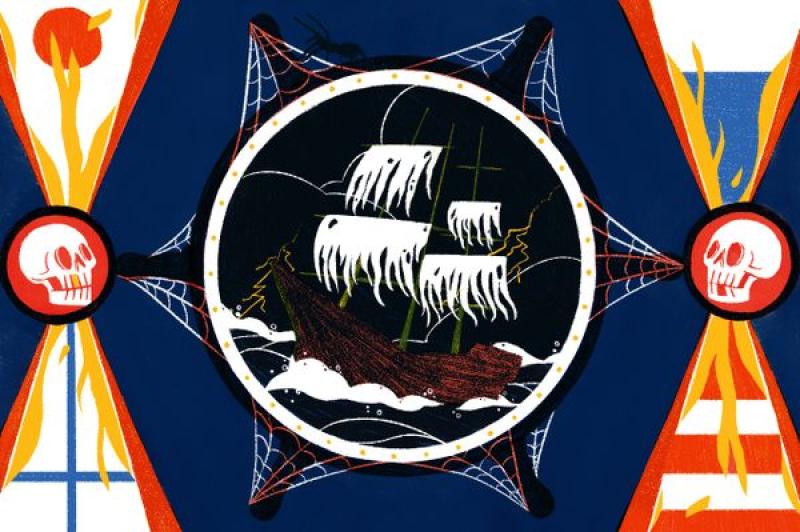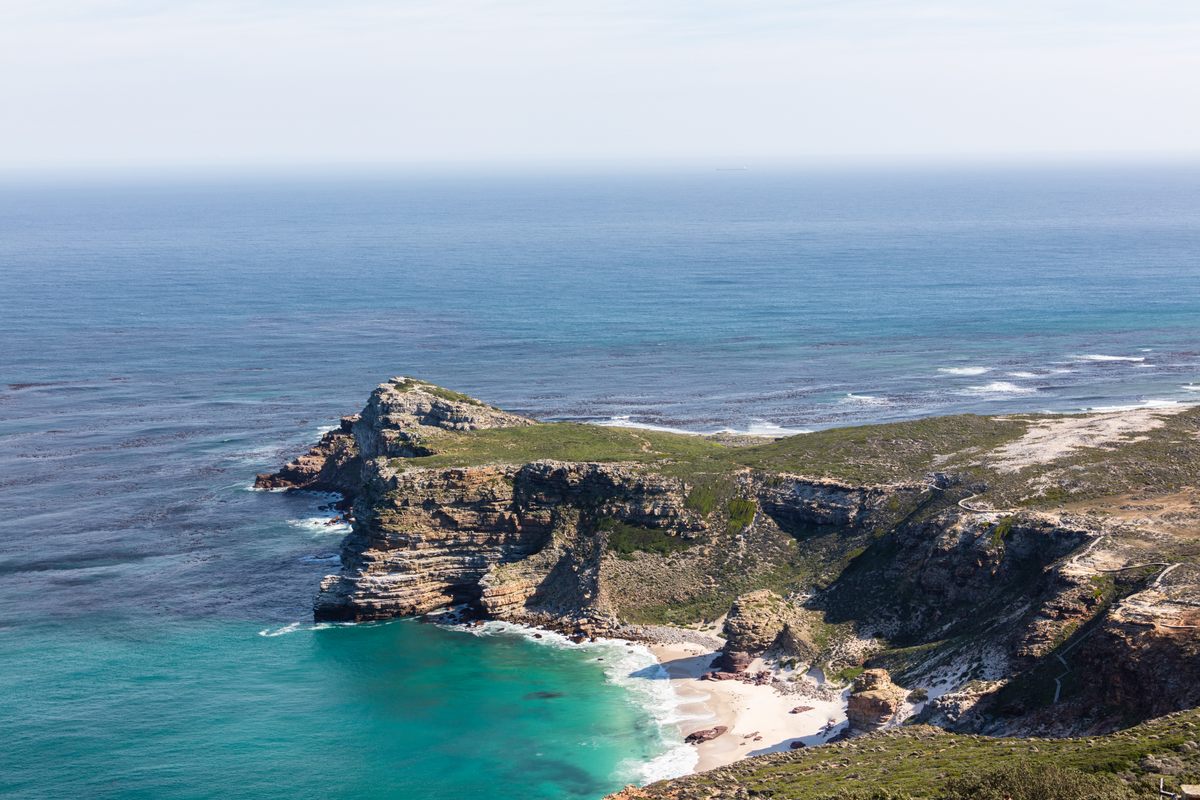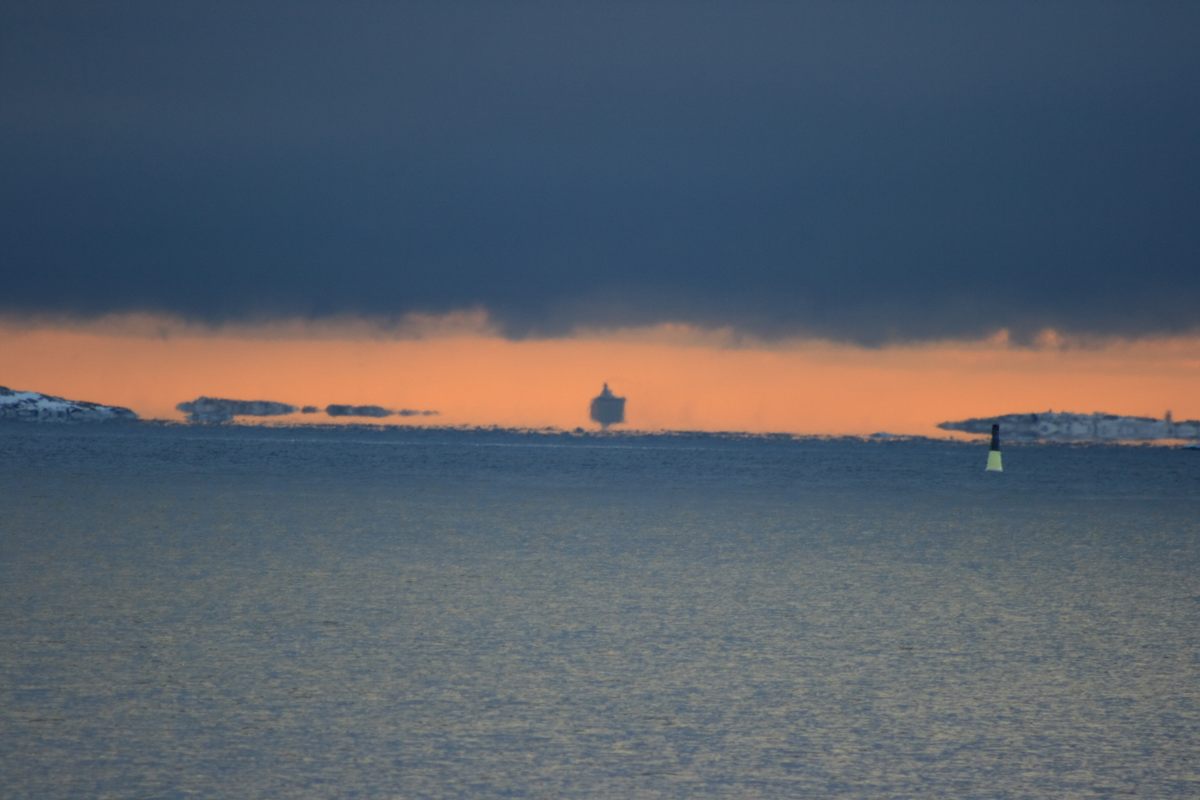The World's Most Famous Ghost Ship Is an Enduring Symbol of Empire
By: Isaac Schultz (Atlas Obscura)



The World's Most Famous Ghost Ship Is an Enduring Symbol of Empire
The Flying Dutchman's long afterlife began with a British power trip.

The spectral ship has a curious, centuries-old history. Carmen Deno
It's said that not all who wander are lost, and that's mostly true. Some are just damned for all eternity—like the crew of the Flying Dutchman , perhaps the most infamous ghost ship to haunt the seven seas.
But before it sailed all seven, serving as an omen of doom for any sailor who saw it, the Dutchman made its name off the coast of Africa—as an English creation dressed up in Dutch clothing, says Agnes Andeweg, a literature professor at University College Utrecht who specializes in Dutch literature and cultural memory.
"I have searched all digitally available Dutch texts published until 1800," she says, "including a corpus of thousands of letters by seafarers, and there is no mention of the Flying Dutchman —ever. If it was a piece of lore, it was a British piece of lore."
The ship's story started spreading in the late 18th century, as the Dutch maritime empire collapsed and the Dutch East India Company dissolved. As some versions of the tale tell it, the Dutchman ( De Vliegende Hollander in Dutch) transformed from corporeal to supernatural off the Cape of Good Hope (or Stormkaap )—a notoriously dangerous bend in the maritime route from the Netherlands to the occupied islands of the East Indies, now Indonesia.


A painting from 1683 shows Dutch East India Company ships in South Africa’s Table Bay, the northern end of the Cape of Good Hope. Public Domain
Though the circumstances of the ghostly transformation vary—sometimes it's ascribed to the slave trade, sometimes to murder, sometimes to a broken promise—most every story seems to agree that the ship is damned for all eternity, and that its crew must sail forever, never (or very, very rarely) making it to port.
In an academic paper titled "Manifestations of the Flying Dutchman : On Materializing Ghosts and (Not) Remembering the Colonial Past," Andeweg chronicles the origins of the mythical ship, from its supposed roots in the Dutch maritime empire to its modern appearances in SpongeBob SquarePants and the Pirates of the Caribbean movies, where it's captained by none other than Davy Jones, the old sailors' devil (who manifests in the Pirates version as an anthropomorphic octopus-man).
In contrast to that convoluted reimagining, says Andeweg, the Dutchman 's invention by the British was pretty simple. The ship materialized in the written record just as Dutch naval supremacy was waning, and Britain's was on the rise.


The legendary ship is said to have sunk off the tip of the Cape of Good Hope. The Dutchman may have been a metaphor for a shift in the colonial power balance. Diego Delso / CC BY-SA 4.0
"This historical development is what makes the Flying Dutchman story relatable and comprehensible to a British audience," Andeweg says. "The ghost makes sense because this audience understands that the [Dutch East India Company] has become something of the past."
Many have claimed to see the Dutchman over the years (including Prince George of Wales, later King George V). But the majority of those supposed sightings can be easily explained away, most commonly by fata morgana —a mirage that can cause objects on the horizon to morph or hover, floating as so many ghosts are known to do.
"Sailors in the 18th and 19th centuries only had two explanations for the experience of seeing the Flying Dutchman : superstition or madness," says Nic Compton, a maritime writer whose books include Off the Deep End: A History of Madness at Sea , via email. "Either it was a 'ghost ship' or you were mad if you thought you'd seen it. Nowadays we have a third explanation: science."


A fata morgana makes objects appear to hover above the horizon. The phenomenon may account for some of the reported sightings of the Flying Dutchman. ANTTI T. NISSINEN / CC BY-2.0
As the British empire declined over the course of the 20th century, so too did the Dutchman 's fame. The ship that once inspired an opera by Richard Wagner and poems by Thomas Moore and Sir Walter Scott faded into relative obscurity before its recent revival in American movies, comics, and cartoons. Andeweg attributes this to two factors: reduced public interest in (and knowledge of) seafaring, and the end of the colonial era.
"We might say that the current relevance of the Flying Dutchman is limited," writes Andeweg. "But I believe it can still be reactivated—as it was in the Pirates of the Caribbean [movies]. Its [cinematic] relevance may … show how 'we' apparently need to fictionalise or supernaturalise the colonial era."
No politics, no religion, no instagrams, and commentary must be civil. The ToS and the CoC will be enforced, and anything that the administrator deems to be offensive will be deleted. YouTubes, videos and images that the administrator is unable to open must be described and explained or they will be deleted.

Tags
Who is online
81 visitors


Without a doubt the most famous ghost ship of all time - brought to a half-life by Captain Jack Sparrow.
The Flying Dutchman
by Thomas Moore
(Written on passing Dead-Man's Island)
See you, beneath yon cloud so dark,
Fast gliding along, a gloomy bark?
Her sails are full, though the wind is still,
And there blows not a breath her sails to fill!
Oh! what doth that vessel of darkness bear?
The silent calm of the grave is there,
Save now and again a death-knell rung,
And the flap of the sails, with night-fog hung!
There lieth a wreck on the dismal shore
Of cold and pitiless Labrador;
Where, under the moon, upon mounts of frost,
Full many a mariner's bones are tost!
Yon shadowy bark hath been to that wreck,
And the dim blue fire that lights her deck
Doth play on as pale and livid a crew
As ever yet drank the churchyard dew!
To Dead-Man's Isle, in the eye of the blast,
To Dead-Man's Isle, she speeds her fast;
By skeleton shapes her sails are furl'd,
And the hand that steers is not of this world!
Oh! hurry thee on - oh! hurry thee on,
Thou terrible bark! ere the night be gone,
Nor let morning look on so foul a sight
As would blanch for ever her rosy light!
Notes to the poem:
Dead-man's Island is one of the Magdalen Islands in the Gulf Of St. Lawrence, and, singularly enough, is the property of Sir Isaac Coffin. The above lines were suggested by a superstition very common among sailors, who called this ghost ship, I think, The Flying Dutchman.
I'm a sucker for history and legends. There are many stories of ghost ships throughout modern storytelling.
Yes, you're right, I had a choice of posting about one or many, but focusing on one that I consider the most famous of them all was my preference. Besides, it gave ma another opportunity to throw a little English literature at the NT membership.
If I was posting on the subject I would have done the same.
Great minds think alike, as the saying goes.
Not truly a Ghost Ship but a damn good story Jack London's ''The Sea Wolf ''
I was tempted to post an article about ship novels, may still do so because there are some great ones, as you've pointed out.
Maybe it was a mistake to include a bit of English Literature with this article, that could have caused its doom in only a half a day. LOL